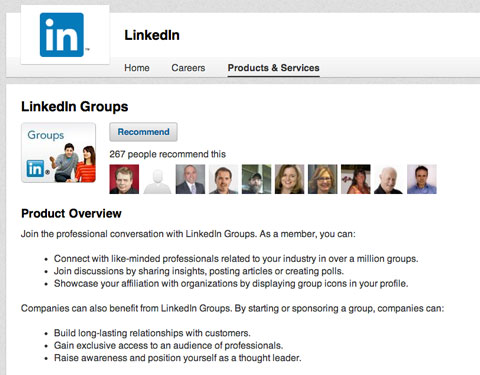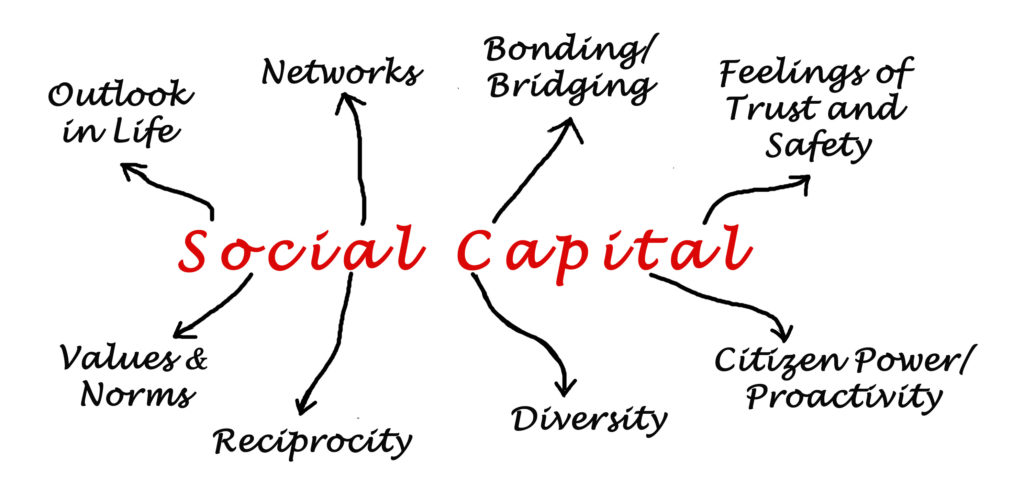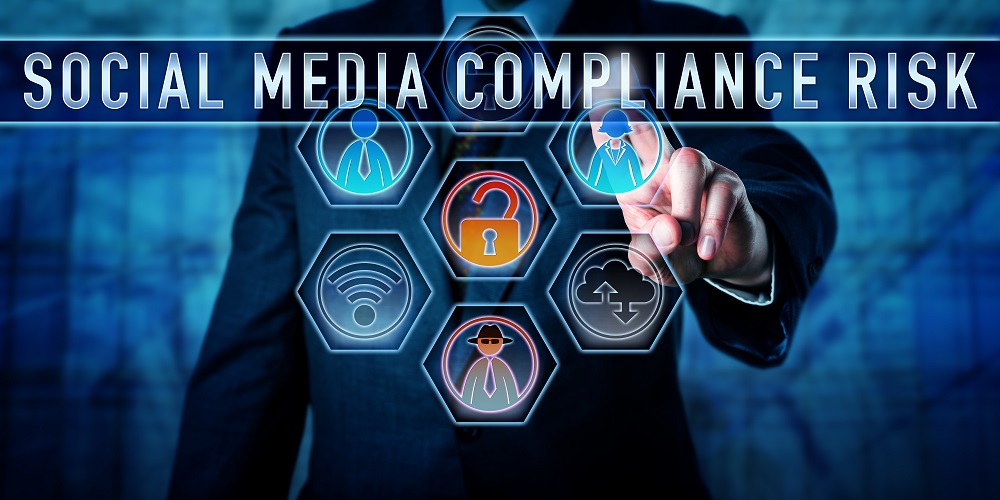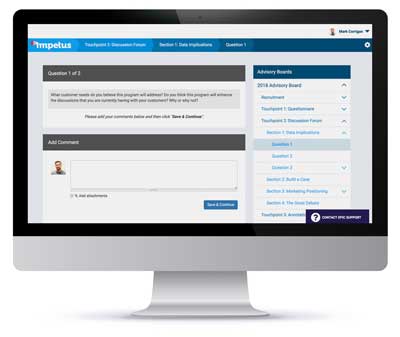Online social networks play important roles in how businesses establish contacts, improve processes, and maintain competitiveness. Unfortunately, they also tend to expose not only our positive professional attributes and successes, but also our scars and blemishes. This level of transparency leaves an indelible footprint in our digital ecosystem. It also imparts a feeling of continuous vulnerability and exposure, with no place to hide. This article aims to describe how online social networks interface with our occupational contexts, reshaping the way we work and play.
Welcome to the World of Online Social Networks
Online social networks (OSNs), defined as web-based services used for social interactions, first emerged in 1997. Since then, there has been exponential growth, with over 1.5 billion people using OSNs worldwide. Today, Facebook, the world’s largest OSN, has over 2.2 billion unique users. This platform merges all nationalities, races, cultures, and genders and finds a common ground for connection. OSNs help create balanced relationships and minimize separation caused by inequalities in status, income, or other societal divisions. Specifically, they do so by acting as a type of social democratizing tool.

People reportedly spend thrice as much time on Facebook than on Google. This comes out to approximately 7 hours per month. However, some people spend that much time on Facebook per day! Facebook enjoys 26% of the world’s total social media usage, with the largest number of accounts residing in India. Women typically spend 30% more time on OSNs than men. OSNs have come to represent more than just sharing selfies, swapping vacation stories, or connecting with family and friends. For example, they are being increasingly used in criminal investigations and college disciplinary hearings. With recent changes to Facebook’s business model, it has become one of the world’s largest advertisement platforms for businesses. Further, it is now a key distribution channel for political and social awareness campaigns.

It is important to clearly define the differences between internal OSNs (often referred to as intranet sites) and external OSNs. Intranet sites can be custom-built, password-protected internal corporate platforms; sites sanctioned by third-party suppliers such as Yammer or Igloo; or internal messaging hubs such as Slack or HipChat. Below, we will discuss the two largest public OSNs, Facebook and LinkedIn, considering their sheer membership sizes and their immense influence on professional businesses.
Facebook, established in 2004, provides an opportunity to build a profile and communicate with other people in a non-work related way. This is done through the posting or sharing of pictures/articles/videos, writing content, liking comments or pages, setting up profile preferences, and joining groups. It also allows people to attend events, play games, and interact with thousands of other third-party integrations, among many other features.
Further, Facebook enables businesses to create advertisements and boosted company page content to create more “Facebook likes”, mailing list subscribers, and general engagement. This results in increased opportunities for businesses to sell their products or services to targeted audiences that fit their specific customer avatar. The level of customer segmentation and specificity has become so granular that companies can now literally target people of a specific gender, age, socioeconomic status, geography, or language. Moreover, companies can target those who like specific products, celebrities, leadership figures, or services. The targeting possibilities are endless!
LinkedIn, created in 2003, is an OSN specifically geared towards professional and business networking. It is especially useful for job searches, discovering sales leads, and connecting with potential business partners or affiliates. Recently, it has become the number one spot for professional connection and the stomping ground for human resource and recruitment professionals. The users are often active job seekers and people wanting to connect with classmates/colleagues or looking for information on other companies/people. Professionals can create, join, and share ideas and content in private groups, send and receive InMail, and connect with potential employers/employees. LinkedIn also allows professionals to follow daily news updates, write articles, and join online courses. Additionally, companies can create their own corporate page where they can publish content that will appear on the newsfeed.
LinkedIn, like Facebook, affords companies the opportunity to advertise, albeit it’s less targeted and much more expensive. The LinkedIn profiles, unlike on Facebook, rarely change and often reflect an individual’s resume. This OSN also requires individuals to purchase premium plans in order to connect more broadly with less direct connections through InMail, to post jobs, advertise, or create more specific reference searches.
Patterns of Use
It is no surprise that 93% of people use Facebook for personal reasons, while only 48% of people use LinkedIn for this purpose. Conversely, 36% of people use Facebook for professional purposes, while 86% use LinkedIn for business. Of the most avid LinkedIn users, 38% and 10% are from the computing/technology field and financial services industry, respectively. These stats are quickly changing as Facebook continues to modify its advertising platform to attract more businesses wanting to generate leads for mainly B2C companies.
Interestingly, engineering and marketing teams use internal intranet sites and chat rooms more extensively than sales, finance, or operations teams. Sixty-one percent of people access OSNs at least once per day, while 15% use them “constantly throughout the day”. This comes out to an average of 18 minutes of a typical working day, or 4% of their time. Seventy-two percent of Facebook users are under the age of 25, while 46% are aged over 46 years. LinkedIn, on the other hand, has 64% of its users ranging between 26 and 45 years in age.

Employees typically use OSNs for colleague networking, learning about colleagues, reconnecting with previous colleagues, research, sales prospecting, marketing communications with customers, setting up meetings with prospects, recruiting, and sharing work-related information. OSNs are ideal for people who want to build their social capital, which, in today’s terms, is the new value currency. Online, everyone becomes equal. You no longer have to slog through menial work for years before capturing the attention of the corporate C-suite. By gaining visibility online, exposure to personality, and having the opportunity to campaign for projects and ideas without the meddling hands of filtering managers, “newbies” can catapult their careers much faster than they have in the past.
Social Searching
OSNs are excellent for gathering information on people you are not yet familiar with or to learn more about people you have just met. In addition, many employers routinely navigate OSNs before interviewing prospective job applicants. Having an active LinkedIn profile, with frequent post “likes” and “comments” or shared articles, can benefit a user by increasing their profile attractiveness. Unfortunately, many people keep their ideas and opinions to themselves in fear that it might “rock the boat” or sound rebellious to the corporate leadership. Additionally, many stories of inappropriate Facebook postings, pictures, and remarks about bosses, as well as comments about unsubstantiated vacations or days off, have resulted in employee terminations. As a result, many OSNs are facing increased scrutiny of their privacy settings.
Social Browsing
People will engage in social browsing if they are looking for experts to solve a particular challenge. OSNs are perfect for this, as they allow for word “tagging” and complex search options and filters to drill down on the ideal candidates. Although LinkedIn is more popular for social browsing than Facebook is, Facebook is quickly catching up with the plethora of celebrity and guru fan pages, as well as private groups spanning every imaginable topic. There are now over 65 million company pages posted on Facebook. Both OSNs are excellent for market research, as meta tags can lead inquirers to a slew of other associated connections, recommendations, and references, as well as brands, events, topics, and people’s “likes” and “dislikes”. Consequently, personality “avatars” can be created from these OSNs.
For entrepreneurs, OSNs provide a bottomless pit of product and market opportunities worldwide. OSNs have effectively extended the reach and scalability of entrepreneurs, which can result in overnight success. This is because OSNs increase the average person’s “affection” rate. That is, how many people they can positively affect and provide value to in shorter periods of time and with less resources than in more traditional “in person” formats.
 Information Seeking
Information Seeking
OSNs are a quick and simple way to access information. Through polls, status updates, and discussion forums in groups, information can be efficiently accessed and shared. Other information-specific OSNs such as Quora and Yahoo Answers have also become go-to places to find experts on specific topics and challenges. Knowledge is now free for the asking and available at the click of a mouse. With the ability for OSNs to attract like-minded people into “groups”, information, people, and financial resources can now be “crowd-sourced” through OSNs.
People and companies are gravitating towards sites such as Kickstarter and Upwork to source money and skilled labor from a global pool. Rote tasks such as video transcription and sales lead generation are inexpensively outsourced, increasing company profitability. The increased reliance on resource OSNs, business artificial intelligence, chatbots, and robotics has effectively freed up employees to focus on the more creative and strategic elements of their job.
One fascinating thing about these OSNs is that information providers are inherently “rated” by their peers by the sheer number of likes and shares they receive. These “under current” scoring systems help separate trustworthy sources from those considered less reputable. Hence, the age-old question of “who do I believe” is more easily circumvented. The built-in networking setups of these OSNs also make it easy for recruiters and employers to seek out qualified and socially connected (therefore indirectly “referenced”) prospects for job positions.
Online Interest Groups
OSNs have the incredible ability to merge like-minded individuals into discrete interest groups. Individuals, regardless of geography, gender, or other characteristics, can congregate online to share, commiserate, and build ideas and movements together. Similarly, workgroups can set up online teams to help accelerate trust building and facilitate communication and work deliverables. The same can be said about private company OSNs or white-labelled platforms such as the Impetus InSite Platform® used to communicate and connect with customer advisors on a series of brand- and company-related issues. All scenarios have been shown to increase productivity and overall member satisfaction. Intrinsic to all of these is the creation of “exclusive” membership, which gives people a sense of “entitlement” and “special status”. The level of peer influence makes the members want to work harder to stay in the private group.
Unfortunately, as OSNs such as Facebook and LinkedIn continue to explode, group sizes have grown to such a degree that it is now difficult to discern who the key influencing individuals are versus the distracting “noise” coming from “opportunists”. As a result, splinter “micro” groups and other specialized OSNs have entered the market to super-segment and further categorize members. One nice thing about company-owned OSNs such as the IIP is that organizations can remain in complete control of the membership.
Social Capital
Social relationships are crucial in almost every work context and scenario. The resulting resources from these relationships are called “social capital“. Reciprocity within these networks ensures that all individuals both share and receive benefits. Individuals who “bridge” social capital do so by connecting weak ties to others or to themselves for the sole benefit of uncovering new information, new contacts, and diverse perspectives. On the other hand, those who “bond” social capital do so by connecting to close friends, family, and colleagues for the emotional and financial benefits they provide.
In work-related groups or customer advisory boards, bonding social capital implies that trust and a sense of obligation will encourage reciprocity while bridging social capital helps facilitate access to non-redundant information and capital. Both are important for making progress and foster relationships. These formal and informal relationship constructs help individuals gain “tribal” knowledge that is often not formally recorded anywhere and helps create advocacy for people and projects. It is through the creation of social capital that we can find the success metric in utilizing OSNs in the work environment.
Procrastination and Productivity Loss
OSNs may be considered a time waster, as they can often be used by employees to procrastinate on important work at hand. Forty-six percent of people reportedly play Candy Crush, Farm Heroes, or 8 Ball Pool on Facebook during work hours. Socializing and chatting on Facebook and other sites such as Instagram and Pinterest can also be considered time wasters. There is currently no established association between social capital building and its intrinsic benefit in the work environment. The gap between liking someone’s social media feed on Facebook and its potential to build stronger collegial relationships remains unbridged. This, in turn, would improve work-related communication and collaboration. In the current corporate environment, OSNs can be considered a useful “rejuvenation” system for employees. Studies have shown that taking frequent and deliberate breaks can help employees stay focused, alert, and within ideal “flow states” for maximum creativity and productivity.
Privacy and Content Controls
Users have complete control of what they input into their OSN profiles and who sees that information. OSNs, after much public debate and criticism, have become very transparent with their privacy policies and have increased the level of privacy controls that individuals can place on their profile information. For example, on Facebook, users can set up their profile, pictures, or posts so that only friends, and not the general public, can see them. LinkedIn allows users to view others’ profiles anonymously or not have their profile updates appear on the general social feed. In addition, all OSNs allow users to preview post comments and timeline-adds from others before making them public.
With OSNs, there is always the danger of employees posting inappropriate or confidential information about themselves or the company they work for. This is further exacerbated if hierarchy, status, or power boundaries are crossed. Many companies have placed controls on who can represent their company on OSNs and have clearly defined the rules of OSN engagement.
Specific Considerations for Pharmaceutical Companies
In the pharma space, due to extra compliance regulations, patient privacy concerns, and diligence required around adverse event reporting, extra attention to how OSNs are leveraged is needed. Previously, many pharma companies removed the ability for the public to post comments. In addition, most posts or responses from pharma were slow, heavily scripted, and riddled with legal jargon. The increased transparency and ability to nimbly navigate the rapidly expanding social universe has quickly made these practices obsolete. Today, pharma is broadening their guidelines about what can and cannot be said on OSNs to appear more approachable and accessible to the public. Employees are also asked to clearly disclose personal accounts on OSNs such as Facebook, LinkedIn, or Twitter to ensure clear delineation between them and their company accounts.
The Future of Online Social Networks in Pharma
OSNs have become a stomping ground for happy marketers. With the ability to profile ideal customer avatars, companies can create laser-targeted advertisement campaigns to generate new customers and to maintain relationships with current customers. In fact, through bonding and bridging social capital, these companies can leverage their loyal customer base for direct referrals and provide on-demand comment or video testimonials. OSNs also provide comprehensive fan pages and advertising analytics dashboards to help companies isolate the keywords, subject lines, content, and creative variables that bring in the most interest from their target group.
Marketing has never been easier or cheaper to administer. However, having said all that, companies are also the most vulnerable they have ever been. With the world of online transparency comes the risk of inviting public displays of naysayers, scathing criticisms, and “haters“. Setting protocols for managing these types of comments and feedback on OSNs is a core mandate for marketing teams. In order to remain authentic, it is also important not to delete negative comments but rather reply to them in a transparent and honest manner.
Corporate-owned Private Portals
Consequently, many companies are navigating the creation of corporate-owned and branded private portals where only “invited” customers can log in. For example, the Impetus InSite Platform allows regulatory, medical, scientific affairs, health economic, market access, and marketing teams to access physicians, investigators, allied healthcare providers, payers, administrators, patients, and other healthcare stakeholders through private, online discussion forums (InSite Exchange™). These can come in the form of advisory boards or working groups. These small, exclusive membership groups allow users to share information and thoughts more freely and transparently. The asynchronous nature of the “call to action” activities within these online portals draw people in at their convenience. This removes the “distracting” element of on-demand email or synchronous platforms such as web meetings or chat forums, where instantaneous responses are often expected. Accordingly, private company portals can be a good option for organizations wanting to minimize their risks on larger public OSNs.
References:
Back, M. D., Stopfer, J. M., Vazire, S., Gaddis, S., Schmukle, S. C., Egloff, B. & Gosling, S. D. (2010) Facebook profiles reflect actual personality, not self-idealization. Psychological Science, 21, 372– 374.
Binder, J., Howes, A. & Sutcliffe, A. (2009) The problem of conflicting social spheres: Effects of network structure on experienced tension in social network sites. Proceedings of the 27th International conference on Human factors in computing system. Boston, MA.
Bohnert, D. & Ross, W. H. (2010) The influence of social networking web sites on the evaluation of job candidates. Cyberpsychology, Behavior, and Social Networking, 13, 341– 347.
Buhrmester, M. D., Kwang, T. & Gosling, S. D. (2011) Amazon’s Mechanical Turk: A new source of cheap, yet high-quality, data? Perspectives on Psychological Science, 6, 3– 5.
Cutler, K.-M. (20.07.2010) Yammer, the Twitter for businesses, crosses 1 million users. Retrieved April 11, 2011 from http:// venturebeat.com/ 2010/ 07/ 20/ yammer-1-million-users/.
Giles, M. (30.01.2010) A world of connections: A special report on social networking. The Economist. Retrieved March 2, 2010 from http:// www.economist.com/ specialreports/ displayStory.cfm? story_id = 15351002.
Gosling, S. D., Augustine, A. A., Vazire, S., Holtzman, N. & Gaddis, S. (in press) Manifestations of personality in online social networks: Self-reported Facebook-related behaviors and observable profile information. Cyberpsychology, Behavior, and Social Networking.
Morris, M. R., Teevan, J. & Panovich, K. (2010) What do people ask their social networks, and why? A survey study of status message q& a behavior. CHI 2010, April 10– 15, 2010, Atlanta, GA: USA.
Pantano, E., Tavernise, A. & Viassone, M. (2010) Consumer perception of computer-mediated communication in a social network. 4th International Conference on New Trends in Information Science and Service Science.
Statistica Portal: https://www.statista.com/topics/1164/social-networks/
Trusov, M., Bodapati, A. V. & Bucklin, R. E. (2010) Determining influential users in internet social networks. Journal of Marketing Research, 47, 643– 658.
Wired magazine, 14.06. Retrieved January 20 2011 from http:// www.disco.ethz.ch/ lectures/ fs10/ seminar/ paper/ michael-8. pdf.



 Information Seeking
Information Seeking




